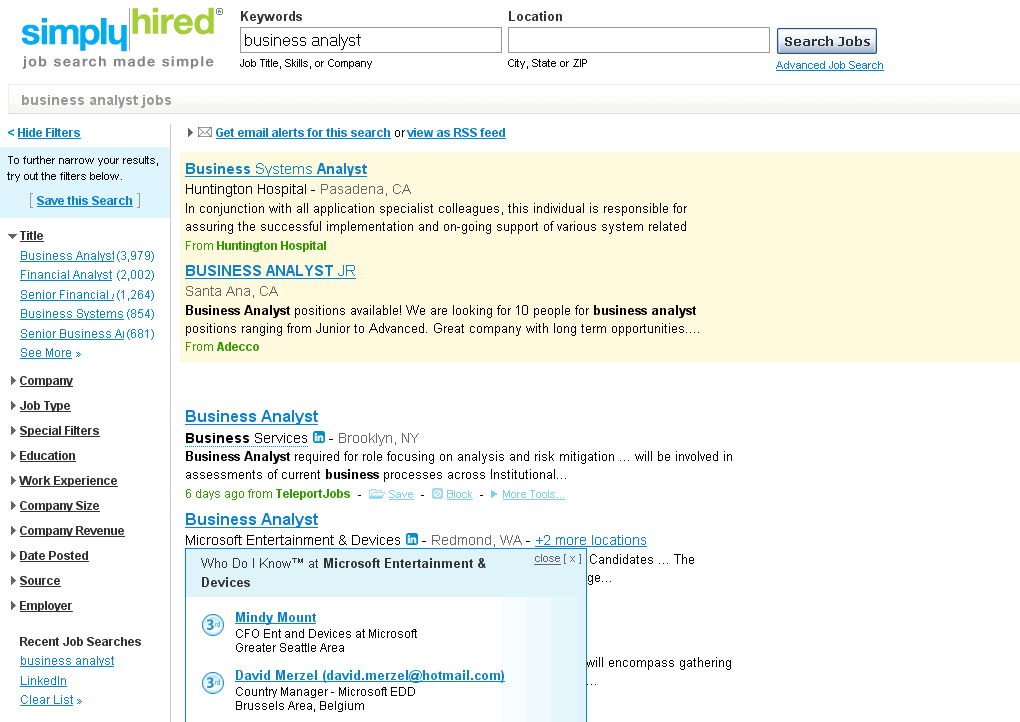 New Digital Media have today announced a partnership between Ebay and CareerOne. Well I use the word ‘partnership’ loosely, because essentially it is a cross-linking agreement. There is a new sub-domain of CareerOne with an Ebay header, and on the flip side Ebay have added a Jobs tab and CareerOne banners smattered through their website.
New Digital Media have today announced a partnership between Ebay and CareerOne. Well I use the word ‘partnership’ loosely, because essentially it is a cross-linking agreement. There is a new sub-domain of CareerOne with an Ebay header, and on the flip side Ebay have added a Jobs tab and CareerOne banners smattered through their website.
 I understood the MySpace cross-linking. Like their parents, News is trying to get the lazy kids of today to roll their eyeballs over some job ads. But in this case I think the word ‘integration’ is used a bit freely in both partnerships, tacking the header of one site across the body of another is not integration. I know people are going to think I am sponsored, but LinkedIn and SimplyHired did a much better job of integrating two different partners online. Maybe that is unfair because there were more common interests? I think that is the point. A recruiter wouldn’t partner with an auction house in real life, so what makes anyone think it would work online?
I understood the MySpace cross-linking. Like their parents, News is trying to get the lazy kids of today to roll their eyeballs over some job ads. But in this case I think the word ‘integration’ is used a bit freely in both partnerships, tacking the header of one site across the body of another is not integration. I know people are going to think I am sponsored, but LinkedIn and SimplyHired did a much better job of integrating two different partners online. Maybe that is unfair because there were more common interests? I think that is the point. A recruiter wouldn’t partner with an auction house in real life, so what makes anyone think it would work online?
 There is however a point that I am much more interested in. Maybe Ebay partnered with the wrong News Digital child. Maybe real estate has more in common? Ebay does after all have a Real Estate category, albeit languishing away the Home category. Ebay don’t have much to lose either; the Home – Kitchen category has 9000+ listings, while the Home – Real Estate category has 167. In fact RealEstate.com.au already has general advertising live on Ebay, they just need to take it that little step further.
There is however a point that I am much more interested in. Maybe Ebay partnered with the wrong News Digital child. Maybe real estate has more in common? Ebay does after all have a Real Estate category, albeit languishing away the Home category. Ebay don’t have much to lose either; the Home – Kitchen category has 9000+ listings, while the Home – Real Estate category has 167. In fact RealEstate.com.au already has general advertising live on Ebay, they just need to take it that little step further.

